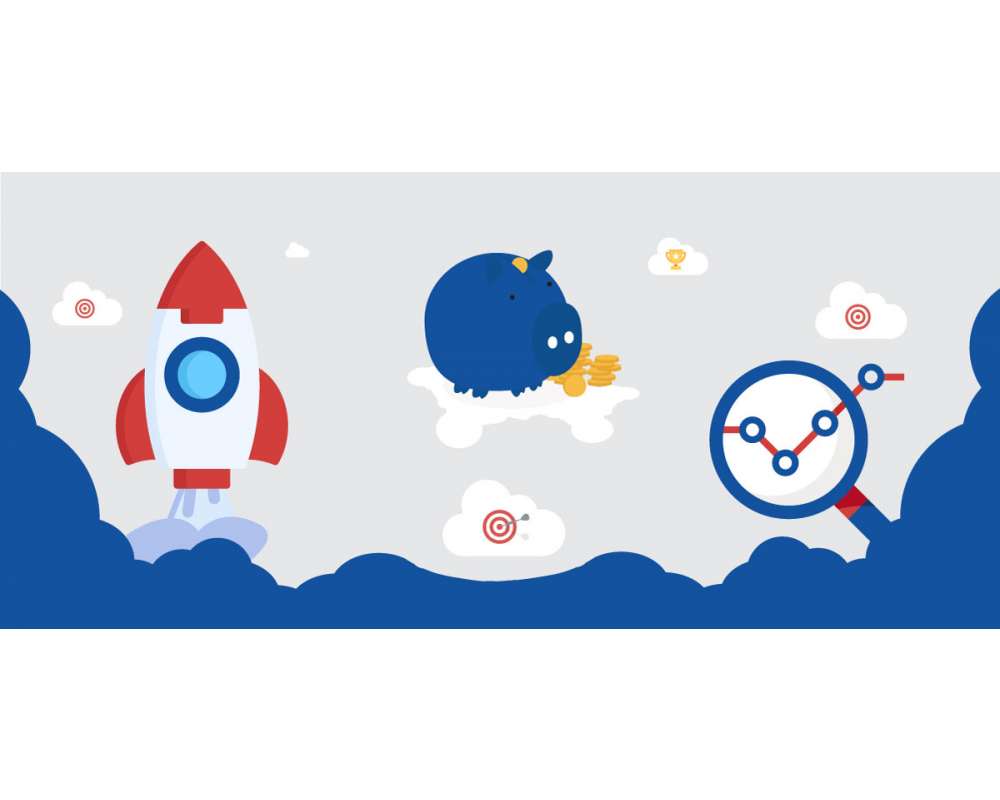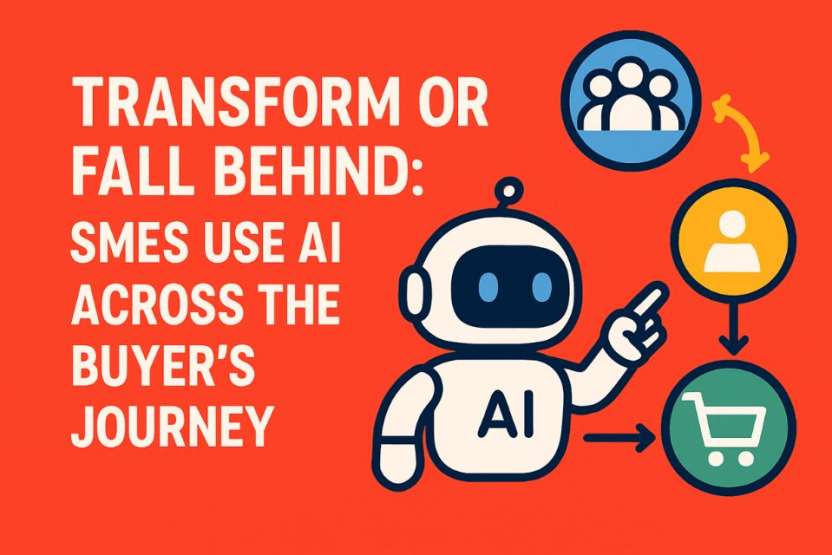From speaking to hundreds of different companies over the last several years Epitomise has seen common core marketing mistakes that are frequently hindering results. Here are the top 25 common marketing mistakes we often see along with quick-fix tips.
1. Not setting-up and using analytical data to guide marketing
Use Google analytics and ensure you set your goal triggers (e.g. form fill thank you page) so you know what components of your marketing are working and creating conversions. If you are not familiar with Google analytics you will find Hubspot’s blog, called The Ultimate Guide To Google Analytics in 2020, an extremely valuable resource.
2. Very busy doing marketing 'stuff' rather than doing the right things
Less is more. Whatever you do, know what you expect from it and do it well. For example, if you create a blog to support outreaching on social and emails and to perform organically, ensure you work this blog until you achieve what you created for in the first place. It’s so easy to create it, think the job is done and move on to the next content.
3. Failing to plan, planning to fail – No plan or prioritisation
Would you build a house without a plan? No. So, don’t try to build your business without a plan. If you want to create it yourself, you may find our blog https://www.epitomise.co.uk/blog/create-business-marketing-strategies/ of help.

4. Pure cost rather than a value for money focus
No one wants to spend money badly. But cheap is often not best. The key is being in total control of spend and what you plan to get back and by when. We are all looking for value for the money we spend. Understand your month-by-month targets and spend and measure progress against them. If you are on-track or exceeding targets great, maybe double down and spend even more on these. If not, ensure you are in control and can adjust, change or even stop your marketing. The focus is on growth and results and the money you spend is returning to your aims. Cheap with no return is the most expensive option.
5. Not establishing a monthly controlled KPI driven environment
Marketing is not about sending a social post or creating a pretty website it is about delivering results. Before you spend anything, know the targets you expect and measure your progress and change and optimise relentlessly.
6. Thinking pretty on its own will drive traffic and engagement
We want our business and its marketing to look nice and for our brand to ooze the company's values. However, a pretty website that isn’t created as a workhorse for your marketing or pretty collateral that isn’t seen by anyone is just a waste of your hard-earned money. Before you create think carefully about your priorities and research what marketing is required to supporting achieving your priorities. When budgets are limited you will have to prioritise and make sacrifices including not aspiring for perfection but what is reasonably good considering everything and the need to typically spend to drive traffic and engagement.
7. Building a website and then considering marketing
Please, don’t do it! Honestly, this one has caused Epitomise so many challenges in being able to quickly help clients create a business in their priority areas. The website supports your marketing and not your marketing supports your website. Epitomise has 60 different landing pages, many which you will not see or be able to navigate to, each with messages linked its target markets and commercial aims. For example, if you search Epitomise's website for marketing mentor you won’t directly find it. However, click on this link https://www.epitomise.co.uk/marketing-mentor and you’ll see it, a hidden campaign centric marketing landing page. Not everything is equal and knowing this is critical to achieve your commercial aims.

8. Using the wrong marketing content at the top, middle and bottom of the funnel
A common example of this is expecting a prospect who doesn’t know you to sit for 4 minutes to watch your client case study video that describes how good your business is. Respecting the value of influencer marketing a case study video that endorses you is typically a bottom of the engagement funnel asset. Hero content, which is content that is extremely desirable, is an example of top of the funnel content. People who don’t know you will be interested in it and engage with you to get it. What hero content do you have?
9. Adopting new marketing technology and expecting it to change the world
The capabilities of modern marketing technology and tools, without doubt, can be very impressive. However, resourcing them fully to take advantage of their powerful features is another story. Ultimately marketing is a process typically aligning and engaging with those who are searching for you or proactively going out to your target prospects and customers. Understand your desired process and use tools to support it rather than using all of your limited resources trying to support the tool.
10. That high-value leads should drop-off of the sausage conveyor belt
It takes a mature and highly considered approach to engage with and ultimately do business with sizeable opportunities. Typically, the higher the value of your orders the more complex and involved the sales and marketing process. Trust is a critical factor to any prospect engaging let alone making a purchase. The higher the value, the more work required to build this trust as purchasers will not want to make career-limiting decisions by purchasing the wrong solution or buying it from the wrong supplier. Also, in larger companies’ teams makes decisions, and your marketing will need to consider influencers and decisions makers. This whole process takes time and it is vital that your expectations align to a longer-term play and results rather than 1-week after your marketing campaign going live asking where your leads are.
11. Making decisions without considering or obtaining customer input
It is much easier to make immediate decisions ourselves based on what we consider sound experience rather than to go out and ask our customers. The problem with this is that often what we think can be significantly different than what our customers and prospects think. Rose-tinted glasses hinder our approach, effectiveness and results.
12. Taking long term approaches when looking for short term results
Many companies are looking for and require short term results to win the confidence of their stakeholders. They then describe the marketing strategies they need. These are commonly unlikely to deliver results quickly. For example, “we need SEO and quality content, so we are visible on Google and people find us”. The request is a contradiction as SEO rarely delivers results quickly. To be found quickly on search engines, a paid approach (e.g. Google Ads) is more likely to be required.
13. Not using marketing automation to aid your productivity and efficiency
Using automation appropriately will enable you to market your business when you don’t have resources and at your busiest times. In your quieter times create your marketing content and then use tools to help you leverage it in the months ahead. For example, create trigger email nurtures, forward schedule your social posts, use automated content creation - see https://report.epitomise.co.uk/ for an example of automated personalised content being created). Conversely, using automation inappropriately for your needs and requirements will result in all of your resources being used to try to take advantage of marketing automation features that in the real-world may have limited value to your business. This includes such items as lead scoring, personalisation and predictive analytics. If you would like further background on using marketing automation you will find this blog, called ‘What Is Marketing Automation? – The Definitive Guide’, from Sprout Social to be of value.
14. Move to produce the next piece of marketing content before ‘working’ the previous content
It is all too common to create content and when it is created and posted, or emailed, move on to the next new piece of content. When you create content to ensure you are clear why you are creating it and what to expect from it. Then continue to work your content to ensure it earns its keep and delivers against your original expectations.
 15. No marketing process supporting the journey from an unknown company to a loyal customer
15. No marketing process supporting the journey from an unknown company to a loyal customer
To ensure you get the best overall impact from your marketing ensure you consider and have a joined-up marketing process from company to loyal customer. The illustration below shows an example journey. The journey starts with people searching and finding the company or you outreaching to your target prospects and then basically nurtures and progresses engagement and relationships through to first-step orders and build loyal repeat purchasing customers.
16. Not carrying the company’s strengths into value propositions and messaging
Start by reflecting on your company’s strengths relative to your target market and business opportunities. The tools within this blog will help you with this exercise https://www.epitomise.co.uk/blog/create-business-marketing-strategies/. Once you know your strengths and are considering your client-facing value-based messaging ensure it includes the relevant strengths identified in your business SWOT audit.
17. Not looking at the competition and reflecting on what is working for them
In the digital world, it is amazing how transparent your competitors' marketing is. However, many companies are just too busy to take the time to look and learn. Learning from others can help you achieve improved returns from your own marketing spend quickly and you can judge from what they are doing what is likely to be working to help them create and convert business. For example, look at a competitor's social feed now. It is likely to show you what event they attend, what content they are creating, and any successes they are having. Also, if you use tools such as SEM Rush or SpyFu you can see where they are performing with organic and paid research too.
18. Letting confusing in market marketing messages influence your thinking and decisions
Here is an example of a typical spam email and I bet you, like I, have received many:
‘Your website is not ranked #1 in the search engines? If you want to increase the number of visitors to your website it is important that you have a top search engine position. Our prices are less than half of what other companies charge’.
These spray-and-pray type emails, InMails and messages damage marketing’s credibility and destroy trust in marketing companies. There are so many confusing messages, false statements and significant over-promises with frequent under-delivery it is a mind-field to know what is the right thing for you and we are all worried of paying too much for something we could get elsewhere cheaper.
Being found by those searching for your services is important and a considered SEO strategy can give you medium to long term results. Know what you are trying to achieve, how you plan to achieve it and then select the right methods/partners to help you. A considered and researched approach with clear targets will help you stay on track to your aims rather than making ad hoc decisions that inevitability leads to disappointment.
19. Overthinking all the marketing tasks you have to do, instead of focusing on one at a time
One of the biggest problems that business owners have is managing their own marketing as well as providing exceptional service to their clients. Marketing gets put to the back burner and it feels like an overwhelming mountain to climb with the thought of all the things that need to be done. The key here is to remember that 'Rome wasn't built in a day'. Great quality websites are not built overnight. What is important is having a plan, focusing on each piece of work at a time and making sure it's finished to the highest quality possible at that point of time. Waiting for perfection with everything will stall your progress, so it's important to begin and take things on, one at a time.
20. Posting blindly without reflecting on the reach to primary target companies
If you post your carefully considered content and messages to people who aren’t your target purchasers, there is a high likelihood that you’ll be very disappointed with your results short, medium and long-term. How many of your LinkedIn, Twitter and Facebook connections are your future target purchasers? Yes, we can use relevant and trending hashtags to help extend reach and if our posts are liked or shared then there is a chance one of our targets could see them. But it is so common for significant effort to be on creating and posting but the actual reach and results are just not there. You must choose marketing vehicles that reach your target audience if your marketing is to be effective. Our channel of communication blog https://www.epitomise.co.uk/blog/channels-of-communication/ addresses this topic.
21. Trying to be everything to everyone with spray-and-pray marketing
If you try to be everything to everyone it is likely, you’ll be nothing of substance to anyone. Substance typically has depth and to build depth takes focus and time. If you target everyone and everything it is likely that the depth of your messaging and marketing is going to be thin and your spend is also likely to be spread too thinly to make any real difference. Focus helps us understand and from the understanding, we can build value. Focus can be a vertical market, a horizontal market or certain defined market segments.
22. Thinking something doesn’t work as it didn’t work before
“That didn’t work for us previously, so we aren’t interested in doing this again going forward” is a very common statement in our conversations. Everything in the marketing mix works for the right circumstances and situations. The challenge is that different situations can apply to businesses that on the surface look in principle the same. So, for example, Google search advertising worked for one but not the other. The other is the company that is saying that didn’t work for us before. It is important not to dismiss anything in selecting what is right to deliver your desired results cost-effectively. Carefully implement chosen strategies, constantly monitoring and optimising to ensure desired and planned results are being or showing they indicators that they are likely to be achieved.
23. Not creating short-term marketing in a way that it also contributes to longer-term results
Consider why you are doing something before doing it. Why are you writing a blog? To create content for your website, your email and to socially share? If you use automation as described above in mistake xx this can mean your content will have immediate and longer-term value but also with a little consideration your marketing can be created to deliver value over time too rather than being one and done. If you take your blog content and align it with the right and carefully selected search terms and include this into well-structured content in time your content may performance organically too. Our blog provides more detail on how to improve SEO results.
24. Being impatient for results and not allowing for a period of learning and optimisation
The tip described to resolve mistake 10 applies here too; it takes a mature and highly considered approach to engage with and ultimately do business with sizeable opportunities.
However, all stakeholders are usually concerned that their marketing investment may not work and that they may be wasting their money. This puts pressure on achieving early results, but this isn’t always possible, and this is where the early success indicators need to be detailed and shared with all stakeholders. Progress against these provides on-track journey indicators and confidence that the investment is against the plan even though a win may yet to be won. Early campaign learning should be embraced, and ongoing optimisations made to ensure the desired indicators are being achieved.
25. Producing before researching and not aligning with what prospects are looking for
Although last this is not the least mistake in our top 25. In fact, this is an extremely important mistake to address. It is important to align with what your target prospects are looking for that you can help them with. To know this research what they are looking for, what their top questions are and then create your content to align with and answer these. Our blog provides more detail on this important topic. If covers the example of a training company wondering whether to positioning itself to ‘Leadership Development Program’ or ‘Leadership Training’.
There you go, 25 mistakes that combined can destroy the value and results of any company’s marketing and hints and tips to avoid these. From your experience are these the common marketing mistakes that you experience or are there others that are missing?
If you found this blog to be of interest and value, you may also like our blog on why you could be wasting up to 60% of your marketing budget and how to fix it.
Like this? Share it!
About Epitomise:
We help SME and Technology companies use modern marketing strategies to grow. From strategic advice to tactical execution grow your business with the support of a 'top-100' award-winning marketing leader who is supported by a network of expert marketing specialists. With over 20-years' senior marketing experience and a track record of delivering results, as an attentive expert strategic marketing and services company, we help you grow your brand, leads, sales and customers by doing the right things the right way. Help for as long or as short as you need.






